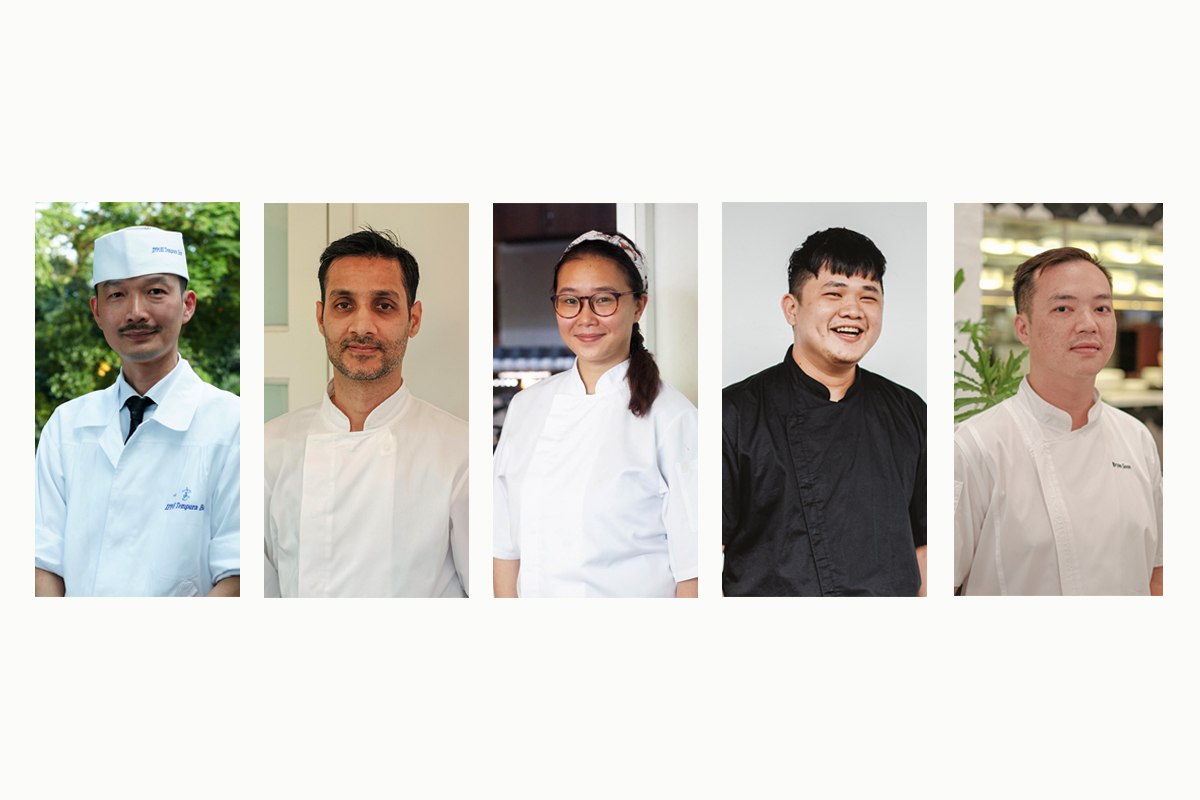A Day in the Life Of… (Part 2)
Refreshing new conversations for Part 2 of our ‘A Day in the Life’ series await.
You’ve read about our Executive Chefs passionately and tirelessly creating delicious experiences, but now we want to shine the light on those they work closely with. From missing home and home-cooked food, be inspired by four Sous Chefs and a Pastry Chef. Their journeys and ambitions driven by the simple love of good food are stories you mustn’t miss out on.
Sous Chef Hanyung Lai | Candlenut
Sous Chef Kailash Chand | COMO Cuisine
Sous Chef Edwin Lee | Ippoh Tempura Bar by Ginza Ippoh
Sous Chef Bryan Soon | The Dempsey Cookhouse and Bar
Pastry Chef Felicia Khoo | The Pantry
A Day in the Life Of Sous Chef Hanyung Lai
Candlenut
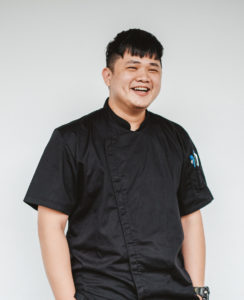
Tell us about yourself.
My family and I are from Kluang, Johor in Malaysia – it’s famous for its Kluang Rail Coffee. I’m from a small town there called Layang Layang.
I’ve always liked cooking. Since we were young, a few of my friends and I dreamt about being chefs, so we joined a few restaurants together as part-timers, mostly for events like weddings. We’d be stationed at a temporary outdoor kitchen set up near the event to help with deep-frying, boiling, steaming and so on, to serve 1,000 guests per night. And we were just 12 years old!
I moved to Singapore after I graduated from secondary school. For financial reasons, I worked at Changi Prison as a security officer for two years, where I escorted inmates to court, the hospital, or wherever they needed to go. But it wasn’t what I wanted to do. My main passion has always been cooking.
I’ve been with Candlenut for seven years now. I joined as a cook in 2013, when Candlenut just opened at Dorsett and became a Sous Chef in 2016.
What got you into cooking?
When I was growing up, I remember I’d wake up every weekend surrounded by the smell of garlic and the sight of my mother cooking in the kitchen. You remember these kinds of moments.
What did your mother cook that you remember fondly?
Very simple dishes, like braised chicken with potatoes and even sardines from a can. You just slice some onions in, heat it up and eat it on its own, or have it with rice and chopped chilli padi. I didn’t really grow up eating Straits Chinese food even though my maternal grandmother is Peranakan. However, when I joined Candlenut, I found a lot of dishes similar to my mum’s cooking. Like braised pork and potatoes – which I thought was a simple childhood dish – but I realised it had similarities with babi pongteh.
Even a simple dish of fried luncheon meat can be really nice when she cooks it. Mothers just have this magical touch that makes food taste really good.
What is a typical day for you at Candlenut?
Let me start at night, as that makes more sense to me. Every night, I’ll finish work at around 10.30pm, then ride my motorbike or drive all the way back to Malaysia. I’ll reach home around midnight, take a shower, then look for supper. There are loads of good supper spots around my home and 24-hour mamak shops.
A dish I frequently have is kway teow kia – it’s every part of the pig, braised, and paired with kway teow soup. It’s similar to kway chap but our kway teow is a very thin, flat noodle.
So after supper, I’ll sleep and wake up at 8am to get ready for work. I’ll get on my bike and reach Dempsey at around 10am or a bit later because there’s usually a traffic jam along the way.
Once I’m at Candlenut, it’s coffee first – an iced latte. I don’t have time for breakfast. I’ll start checking the menus for pre-orders, events and dietary requirements for the guests. Then I’ll brief the managers and hosts to confirm everything that needs to be done before lunch service at 12pm.
I’ll check every station – from curry, grill and the wok stations, to the cold section for appetisers and salads. My main job is to find solutions for the team and fix all the problems to ensure a smooth service. I’m also the last person to check every dish before it gets served to our guests. It helps that I’ve cooked all the dishes before and am very familiar with them.
The prep for Peranakan food is far more complicated as compared to Chinese or Western cuisine. Our serving is easy – we just need to scoop it out, heat it up and serve. But the prep work is a different story. For example, to make one rempah, there can be 12 to 20 different ingredients and we have to chop everything. We have to make sure every little step is executed perfectly.
What do you like about being a sous chef?
What I like about it is that there’s a different challenge every day. For example, sometimes I’ll open the fridge to find that the sauce isn’t right, so we have to quickly make the sauce again in time for service. I like this kind of rush – to be able to troubleshoot quickly and the adrenaline that comes with it. You have to be quick-minded and I enjoy that a lot.
What do you do on your days off?
I come back to Candlenut just to hang around and chit chat with the team. There’s about 20 of us in the team and we are like family. Most of us have worked here for a long time and I think I’ve been here the longest. All of them are incredibly patient and have their own dreams relating to food and cooking.
If I’m in Malaysia on my day off, I’ll go to my favorite café, People & Places. I’ll always sit at the same corner because it’s not as noisy and I can watch or read something. But it’s closed now, because of the lockdown.
What did you miss the most before Phase 2 started?
I was in Malaysia during the lockdown and only came back to work at Candlenut in September. Malaysia had very strict lockdown regulations. From March to May, the closing time for all shops – including 7-Eleven – was 7pm. I was itching to walk and move around, especially because I was stuck at home with nothing to do during the lockdown and could only order takeaway. I couldn’t see my friends and just stayed at home with my family.
What would you want to be if you weren’t a chef?
Something food-related. I wouldn’t want to be an owner of a restaurant because running a business is a different matter altogether. You have to think about costs and so on.
Maybe when I retire, I will open a small place or even a space in my own house for people to hang out, have coffee and small bites. I’d like to bring back a sense of childhood nostalgia, a place where people can remember childhood memories. To me, that’s so important – childhood is the best period in your life.
I can imagine serving very traditional ice kacang, chendol, old-school satay, curry, homely food – even fried luncheon meat with a sunny-side up and duck soy sauce on a metal plate. And there’d be old-school furniture, too. A space for people to relive those memories again.
Interview on October 5th, 2020
A Day in the Life Of Sous Chef Kailash Chand
COMO Cuisine
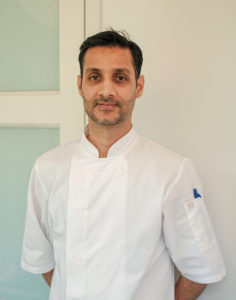
Tell us about yourself.
I’m from Himachal Pradesh, India. I’ve been working with the COMO Group for 12 years now. I started off as a chef de partie at COMO Cocoa Island in the Maldives in 2008 before I moved to COMO Maalifushi in 2013 for about four years. I relocated to Singapore to be a sous chef at COMO Cuisine in 2017.
When did you realise that you had an interest in cooking?
I was around 19 or 20 years old when I did a cooking diploma in India. So, it’s been 20 years now.
Before that I’ve never really cooked at home or had foodie friends. I left home to figure out what I wanted to do. I was working as a helper for free at a small sweet shop just to get experience when I saw an advertisement in the newspapers about a cooking course. I suddenly felt like: “Okay, let’s do this.” So, I went for the interview and cleared the exam. When I started the course, it felt so natural – I had made a really good choice in my life. I loved it.
When I was growing up, food was just food. But now, I’m learning all these interesting things and how food can be like this, or it can’t be like that. I love cooking in general.
Where do you draw your inspiration from?
Chef Timothy de Souza. I met him when I started working at COMO Cocoa Island 12 years ago. He’s very talented and I respect his cooking style. A mentor to me, he’s taught me a lot and has always helped me. He inspires me and encourages me to just go for it.
Outside of work, I am inspired by my older brother, who’s 10 years older than me. Till now, whenever I ask him for anything, he never says no. Whether it’s general advice or financial help – he’s always there for me.
I’m the youngest of five siblings and we’ve all settled down, so my mom and dad are finally living a happy, stress-free life now. I can’t really explain how much we struggled together as a family. It was hard to even put food on the table sometimes. Thinking back about what my parents have done for us, I’m truly grateful. So now, I only want them to be happy and give them whatever they want. They’ve come here once before. They’re vegetarian but they loved the food here.
Take us through a typical day in your life.
I wake up at 7am to get ready before heading to COMO Cuisine. I usually have breakfast made by morning shift chefs.
After going through the operations requirements for the day, we’ll start the prep work for lunch service. As a sous chef, I check on all the sections in the kitchen to ensure that everything is properly organised. If anything is missing from a section, I’ll jump in to help.
Once service starts, I’ll stay on the pass, communicate with the front of house, call the dockets, and check on each and every section, as well as the plating and taste, before each dish is sent to the table.
In between service, we have a two-hour break but we usually use that time to do administrative work, build costing sheets, go over rosters, etc.
Working long hours is easy for us because we’re used to this lifestyle and we give our lives to this profession. We can’t sit down for more than an hour, but we can easily stand for 10 to 12 hours.
Do you cook for yourself at home?
Yes, very often and even more so during the Circuit Breaker. I usually shop for ingredients at Little India and cook Indian food mostly. I make my own chapati, cook curries and vegetables, sometimes pastas and soups.
What do you miss the most during this period?
I really miss my family – my wife, kids and parents who live in Himachal Pradesh. They usually visit this time of the year. My kids are six and nine years old, and I haven’t seen them for a year – I only get to see them via video calls. I call them all the time – after work and sometimes after an event. They’re my stress relievers. I always feel better after talking to and laughing with them.
I also missed dining at restaurants and all the staff missed COMO Cuisine. We are like family here.
Tell us something about yourself that’s not commonly known.
I love to buy clothes, but I don’t use them, they just sit in my cupboard! I like to shop at Club21, Uniqlo and Bugis.
If you weren’t a chef, do you think, what do you think you would have been?
Maybe an athlete? I like sports, and I love playing cricket, table tennis and badminton. I used to play badminton, basketball, football, volleyball and swim every day when I was in the Maldives. It was so much fun.
What advice do you have for aspiring chefs?
It’s a mental practice. Everyone who works in the kitchen has their own problems and stories. But once you enter the kitchen, you just have to put everything down and focus on the job. Always finish your work, then go home to deal with your personal issues.
Interview on September 29th, 2020
A Day in the Life of Sous Chef Edwin Lee
Ippoh Tempura Bar by Ginza Ippoh
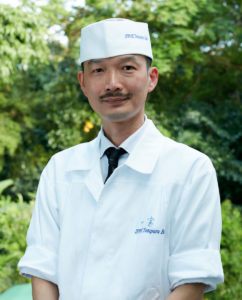
Take us through a typical day in your life.
I get up quite early, usually around 8am. I’m a creature of habit so breakfast is always a simple affair of soft-boiled eggs and coffee.
Once I reach the restaurant at 10am, I’ll check on the reservations before starting on the prep work. It’s the most important step because we need to know how many guests we have for the day. If I’m scheduled to fry tempura for the day, I’ll focus on what’s required for the frying – from preparing the liquid for the batter to cutting the ingredients and getting the seafood ready. To maintain the same exacting standards as Ippoh Tempura in Ginza, everything from the serving trays down to the Hokkaido spring water used for the batter liquid, is specially flown in.
If I’m the kitchen, I’ll be in charge of the mise en place. I’ll make the sauces, soup, prep vegetables and appetisers. We also have to receive deliveries on a daily basis. It’s much busier now as we’ve expanded our seating area to include the lounge in front of the restaurant.
Service usually finishes around 3.30pm. We have our staff meal then take a short break before resuming dinner preparations at 5pm. Work usually ends at around 10pm or when the last customer leaves.
Did you always have a passion for cooking?
I’d rather hold a knife than a pen. Cooking has been a passion since I was in my teens when I was left to settle my own meals.
I’ve never been much of a nine to five person. I was with Shangri-la in Penang for about 10 years. Following that, I started a Japanese restaurant with a group of colleagues for six years before I came to Singapore.
Do you cook when you’re at home?
All the time. I like to cook even when I’m off work. As it’s very rare to find the dishes that I enjoy – like Nasi Kandar and South Indian curries – in Singapore, I’ll just cook what I crave. I grew up eating food from my multi-racial neighbours, so I’m adept at cooking sambals and curries. I’ll usually cook Malaysian dishes, simple homely food, roasts and pastas. Dinner after work is usually roast chicken with vegetables because it’s an easy, comforting meal that won’t put me into a food coma.
How have things changed for you since the start of the pandemic and what do you miss the most?
I miss travelling and going back to Malaysia. My wife’s family is in Johor, which is just a short drive away, so we used to visit every month and a half or two months. I usually take a flight back to Penang every three months. I’ve gotten used to not going back home with frequent video calls and messages.
I also miss having conversations with our guests. Conversations are no longer as intimate as before as everyone has to wear a mask and we have to maintain a distance from each other. As someone in the F&B industry, it’s important to be able to read the guests’ expressions and gestures so that we know what to do without them telling us. Now that we’re only able to see their eyes, it’s a bit difficult to read them sometimes.
What inspires you?
Food. I’m always game to try new food, any food. I’ve eaten many things ranging from fried crickets to monitor lizard curry and fried squirrels. I’ve also had Tempoyak, a fermented durian condiment that’s common in the east coast of Malaysia. Creamy, sourish and a bit bitter, it’s usually enjoyed with rice and sambal but with its pungent smell, it’s not for the faint of heart.
My wife, who’s a foodie, my biggest supporter and critic, also inspires me. If things are not right or what it’s used to be, she’ll tell me. We travel four to five times a year, usually to Thailand, Japan or Australia. Our trips are always planned around food, not the other way around. We’ll either make reservations ahead of time or go there to explore.
Tell us something about yourself that’s not commonly known.
I can build motorbikes from scratch – a skill I picked up from my dad and from the internet. I used to buy rare bikes that could barely move, just to take them apart and fix them. I’m basically good with my hands. I can’t do vegetable carvings even though I can repair motorbikes, circuitry and plumbing. I’m Mr DIY.
I also have a soft spot for dogs. I rescue dogs from the pound and I’ve always had at least one dog at any point in time. Right now, I have a six-year-old stray dog back in Malaysia with my mum. His mum was poisoned, and a feeder rescued him and his siblings. I picked him as he was the weakest one and least likely to be adopted. Unfortunately, he had tick fever then but he’s perfectly fine now.
What would you be if you weren’t a chef?
I would probably have gone into engineering.
Interview on October 27th, 2020
A Day in the Life of Sous Chef Bryan Soon
The Dempsey Cookhouse and Bar
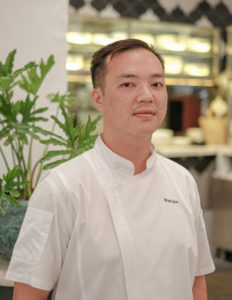
Take us through a typical day in your life.
I wake up at around 8am and get ready for work. I’m not really a coffee person so I’ll usually go for black tea.
I’ll get to work at around 9.30am and take a walk around the kitchen. I’ll see which station needs help for prep work and help out with whichever prep is more important first so that we’re ready for service on time.
When Chef Lisa is not around, I’ll check the stations and the master checklist to make sure everything’s ready by 11.30am. We’ll have our briefing at 11.45am before service starts at Noon. I need to be at the pass once service starts, to check on every dish before it’s served. On days when Lisa’s around, I’ll be at whichever station needs me. If service is busy, I’ll jump in as well.
I like to watch people work so I can see if they’re doing it the right way and not taking shortcuts because we have to follow Jean-Georges recipes step by step. It has to be exactly the same as his other restaurants around the world. That’s why the sous chefs are trained to make sure everything is done correctly.
Lunch service normally ends around 2.30pm to 3pm. After the service, I’ll work on the schedules and Chef Lisa will double check when she’s back.
Did you always know that you wanted to be a chef?
Since I was about 11 or 12, I’ve been interested in cooking and I used to cook dinner for my whole family every night. I used to cook a lot of home-cooked comfort food. Back then, my kitchen was not an ordinary house kitchen, but it was outdoors so it’s easier when you cook. I learnt how to cook from my dad – he’d always encourage me to cook things this way or that, to make it better. He likes to cook homely food and recreate dishes that he tried in restaurants. But professionally, I learned everything here.
What are some of your favourite dishes from your hometown?
I love chee cheong fun, nasi lemak with sambal sotong. There’s a specific stall that I like that serves nasi lemak drenched in gravy and sambal. I like to eat it messy – the nasi lemaks in Singapore are very clean and different. I miss the Malaysian-style pork noodles that you don’t get here.
I moved here in 2017. I miss home a lot especially this period. Pre-CB, I would go back once a month or once every two months. I was in Malaysia the day before Malaysia’s lockdown and Chef Lisa kept calling me to come back.
What are some challenges you face?
When the restaurant first opened, we were so busy and it was all quite new to me. My previous job back in KL was not even a management job. I was only a demi chef – just ranked slightly higher than a cook – at a coffee house at Concorde KL. I met the JG chefs back in 2011. They told me to come to Singapore to work here. I used to come down to help the JG team at F1 every year so I know them quite well. It was my first experience with this kind of food. When I came here, I got to see premium products and there was so much I could work with. It made me feel like ‘wow I want to do that’.
What did you miss the most before Phase Two started?
I miss going home and I miss my friends. We’re a family of five and I’m very close to my grandparents and my aunt as well. I have two siblings – an elder brother and a younger one.
It was really quiet during CB. We used to work five days a week, and then that went down to three or sometimes even two days a week. I was so bored.
I don’t even know how I got through the CB period. I don’t sleep much so I was playing games and watching TV.
What do you do in between service?
If Lisa is around, we usually talk about the food and the menu – what should we do about it, should we take a dish out or change it to something more interesting. That’s what happens every single day.
What do you think you would have been if you weren’t a chef?
I think I would be in anything related to sales as I see myself as very talkative.
Would you like to start something on your own one day?
Yes, if I can afford it. But of course, I also need to find a good partner. I think I would start a restaurant, but not a high-end one as I want to serve food that people can afford. The food’s going to look expensive, but it won’t be. The type of cuisine would be fusion.
Any fun fact that no one knows?
I have nicknames for everyone in the kitchen. For Lisa, sometimes I call her Maria or Mary because her name’s Melissa Marie Revilla. I call Jeanette Netto. Sometimes I do it in a high-pitched voice that totally annoys them.
Interview updated on October 26th, 2020.
A Day in the Life of Pastry Chef Felicia Khoo
The Pantry
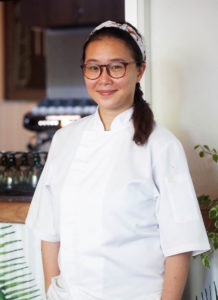
Bring us through a typical day in your life.
I wake up at 7am to get to work by 8. We prepare everything for breakfast, lunch and have a quick briefing before doors are open at 9am.
My day always starts with a cup of coffee and ends with a glass of beer, which is a Guinness most of the time. In between those two, I’m cooking and baking!
Where do you source for ingredients? What are some of your favourite places to look for ingredients?
It’s important to maintain good relationships with our suppliers – this way we can ensure quality, control costs and understand our products better.
I like taking walks in the wet markets and supermarkets to see what’s in season and readily available to include in the menu. I like doing my groceries at Sheng Siong, but I can’t tell you which one exactly otherwise I’ll have more people to fight with while I’m shopping!
What do you do in between service?
Cooking a family meal together with the kitchen team. It’s my favourite part of the day because we get to try each others cooking and fill our tummies. Since the kitchen team consists of different nationalities, backgrounds and experience, we always have a good mix of food for family meals which makes every day different and special. I cook a lot of Thai food as my boyfriend is Thai.
What did you miss most during lockdown before Phase 2?
Travelling and fishing. During the lockdown I did manage to find some time gardening though I don’t have a green thumb. It’s nice to be able to use my plants (that I have not killed) in my
cooking at home.
How did you get into pastry?
Like most people, it started off as a pastime when I was young. After getting my Diploma in Business, I got a job making cakes in a cafe just to be sure I wanted to go down this line. After some months, I applied for culinary school and am lucky to have my family support my decision.
What was the most memorable moment for you as a pastry chef?
It’s difficult to pick one – pastry has opened many doors for me. I had the opportunity to make cakes for both local and international celebrities, and also be on magazines and TV!
What inspires you?
Books, travel and mentors.
Tell us something about yourself that’s not commonly known.
Before I pursued my studies in pastry, I was commissioned to make cakes for a Club21 Mulberry launch – who knew I’d be working under COMO after 10 years?
What would you be if you weren’t a chef?
It would certainly still revolve around food – maybe be a supplier, or run my own supermarket.
What sweet treat would you recommend this month to our readers?
New on the menu – the Sea Salt Caramel Chocolate Tart.
Interview updated on November 10th, 2020


